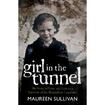
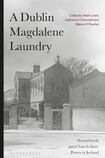
In Claire Keegan’s perfect novel, Small Things Like These, Bill Furlong, the protagonist, discovers a young woman locked in the coal shed of the Magdalene laundry in New Ross, Co Wexford. She is cold, hungry and frightened. Furlong makes a good part of his living delivering coal to the convent which runs the laundry; he has a lot to lose by intervening in this young woman’s misery. But he does so.
Maureen Sullivan was 12 years old when she was taken from her school in Carlow to the Magdalene laundry in New Ross, in the mid-1960s. She was incarcerated because she told an allegedly sympathetic nun at her school that she had been physically and sexually abused by her stepfather for years. Nothing happened to the stepfather; her mother appeared powerless to prevent her removal. She was effectively punished for the crimes of her guardian and the compliance of her mother.
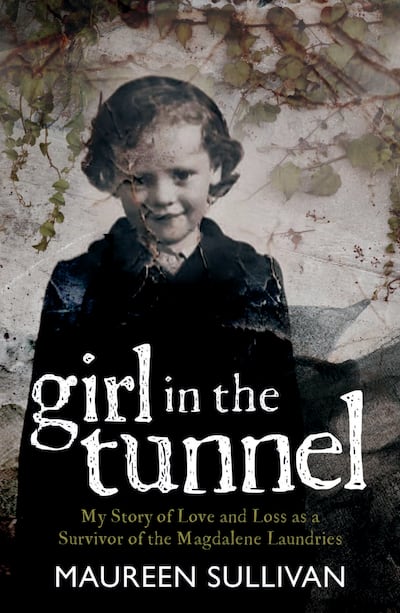
Her story is a catalogue of misery, neglect and horror, compounded by the callous indifference of almost every adult in her life to her plight. Her mother is widowed young, with three young children to rear. They are living with her mother in a two-roomed cottage in the countryside outside Carlow town. They have very little to live on, despite the grandmother’s ingenuity in conjuring up food, and Maureen’s mother quickly marries a pig-jobber in Carlow, to provide for her children.
This man is a vision from hell; he refers to Maureen and her two siblings as “the Sullivan bastards”; they are neglected and beaten regularly, and deprived of food to favour his growing family of children by their exhausted mother; very early, when she is eight years old, he begins to sexually abuse Maureen on a regular basis. Her descriptions of these assaults are unbearable – a small defenceless child being brutalised by an ugly predatory man, with no recourse to any help.
READ MORE
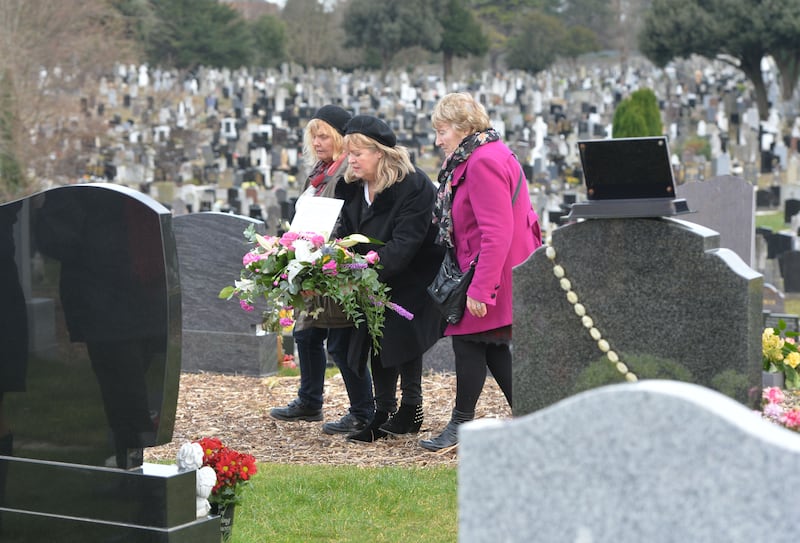
When she is 12, she discloses her abuse, while being bribed with sweets, to her supposed ally, a nun in her school. The nun had two choices: go to the police and report the abuse; or go to the parish priest and set in train four more years of misery for Maureen, this time in two Magdalene laundries, where she experienced physical brutality, slave labour, denial of her education and cold unkindness from the nuns who must have known the reason why this child had arrived. There is a poignant description of a rare visit from her mother and her brother (who had ended up in an industrial school). A nun sits stiffly in the room throughout the visit. There is little communication. She describes her family and herself as “three worn-out animals in the same vicinity”.
Maureen ends up at St Mary’s School for the Blind on Merrion Road in Dublin, after being moved from New Ross to Athy laundry. She finally made a friend in the school for the blind, one of the residents, who reminded her, as did her mother, that she was working very hard for no pay, and she should ask about getting a wage. At the age of 16, she asked to see the Mother Superior and told her she was entitled to be paid. And in almost the most infuriating moment in the book, the nun replies: “No one is holding you here.” This is the exact opposite of what she has been told for four years and what she witnessed when fellow inmates tried to escape, and emblematic of the vast hypocrisy at the heart of the Magdalene enterprise.
Maureen has one person who provides her with unconditional love – her grandmother, who is powerless to help her in her appalling family situation but who alleviates it as much as she can, and gives the child the essential nurturing which stays with her through her later travails. It is some consolation to the reader to find this poor elderly woman shining like a beacon in the middle of this tale of horrors.
Maureen asks the fundamental question that occurs to everyone who knows about Ireland’s carceral institutions: “Why were they so cruel to me? Why were they so hard? I was a little kid, yet they never let me have a minute to look at a book or sing a song... I was made into a miniature robot for the church to profit from.”
This book is another important testimony from a brave survivor of two kinds of abuse – familial child sexual abuse and incarceration, physical and emotional abuse in three religious institutions. I would have liked to have read more about her post-Magdalene life, in which she became an activist and advocate for her fellow sufferers. But what Maureen Sullivan gives us is essential reading: we are by no means done with what church and State did to vulnerable women and children in this country, and books like this one are a timely reminder of Ireland’s reprehensible past.
Survivor testimony has always been at the heart of Justice for Magdalenes Research, the ground-breaking advocacy and research project for former inmates of Magdalene laundries. They have gathered numerous survivor accounts as part of their oral history project (Maureen Sullivan’s among them), made many important submissions to the McAleese committee’s Inquiry into State Involvement with Magdalene laundries, most of which were shamefully ignored, given help with survivors’ legal needs, and produced valuable research outputs, of which the latest is a study of Donnybrook Magdalene laundry, run by the Religious Sisters of Charity.
The book gathers writers from many disciplines, including history, law, archaeology, archives, museum curatorship, architecture and accountancy, to give a multifaceted view of a Dublin laundry which held hundreds of women, doing arduous physical work for no pay, some for most of their lives, between 1937 and 1992. The archivist Barry Houlihan of NUIG Library, who accessioned the records found at the site after its closure, points out that former president Mary Robinson, elected in 1990, was patron of the National Maternity Hospital, which had a laundry contract with Donnybrook at the time. Very different worlds could exist side by side in 20th-century Ireland.
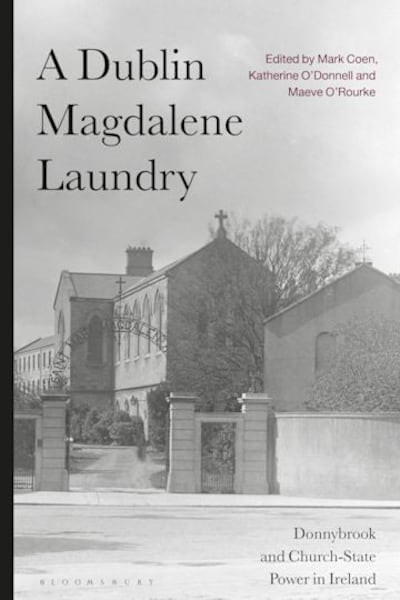
Mark Coen’s two chapters form the backbone of this book: one on the history, development, formation and activities of the Religious Sisters of Charity (RSC), the order which built and ran the Donnybrook Magdalene laundry; the second on the history of the laundry itself. That these chapters are so informative and interesting is almost heroic, given the lack of access to the archives of the RSC. We are told that Coen got access to the annals of the order up to 1920 for one day, was forbidden to photograph them and thus obliged to transcribe what he could in this ludicrous period of time.
He has made excellent use of other sources: materials about the RSC published by themselves, media reports, records in the Dublin Diocesan Archives (a shining light in terms of public access to its important collections) and some late records rescued from the site of the laundry after its vacation by the RSC.
The order of the Religious Sisters of Charity was founded in 1815 by Mary Aikenhead, whose vision for her order was “service to the poor”. The RSC established St Vincent’s hospital in 1834, and took over St Mary Magdalene’s Asylum on Townsend Street in 1837, which was then transferred to the distant suburb of Donnybrook. Numbers of “penitents” held in Donnybrook ranged between 100 and 150 at different times.
The laundry had contracts with government agencies, businesses and private households. As Coen tells us, the Department of Defence had a contract with the laundry in 1941, but cancelled that contract after the department established that the women doing the work were not just not getting a fair wage, as required by government contracts, but no wage at all. The response from the order was that paid workers had to be efficient, whereas in Donnybrook, “many of them are mentally deficient” and without their “refuge” would “be in the county home or on the streets.”
Coen has created a template, in these two chapters, for how to create an informative history of a religious order or a religious institution without recourse to the still closed records of these organisations, who ran a shadow state fully sanctioned by the government. Since most of them have refused to engage with the redress schemes set up by the government, the State should require them to hand over their archives to its care. But many of us have been asking for this for many years, with deafening silence the response.
Katherine O’Donnell has a chapter which uses direct survivor testimony to tell part of the story of Donnybrook, and the rigour and extent of the JFMR Oral History collection is greatly to her credit. Mairead Enright very cleverly looks at charitable donations, using newspaper accounts of what the great and the good of Dublin left to the laundry to analyse the RSC success in raising money from this source, and cleverly compares charitable giving to the redress scheme created for survivors, which avoids compensation for unpaid labour and other human rights abuses in favour of ex gratia payments, which carry no liability. Brid Murphy and Martin Quinn look at surviving accounts records found on the site, covering the period from 1962 to 1987, to show that the laundry generated a healthy yearly surplus which would have been wiped out if the women doing the work had been paid.
There are further chapters on the architecture of the buildings, on women who came in through the Criminal Justice system, on the archaeology, such as it is, of the site, and on the salvage by the National Museum of artefacts from the site. And the redoubtable Claire McGettrick finishes the volume with an account of her Magdalene Names Project, a huge research undertaking which is restoring vital information to survivors and relatives.
Over this laudable collection float the ghostly images of the registers of admission and discharge, the annals of the RSC, and the administrative and personnel records of the order, which could so enrich our understanding and factual knowledge of what transpired in this place over its long history.
Further reading
Ireland and the Magdalene Laundries: a Campaign for Justice (IB Tauris, 2021) by Claire McGettrick et al, is a useful guide to the system of laundries, and uses survivor testimony to illuminate the treatment women got in these institutions. It also interrogates the flawed McAleese Report, and outlines the problems still facing survivors. The book is a product of the admirable Justice for Magdalenes advocacy and research group.
The acclaimed novel Small Things Like These (Faber, 2021) by Claire Keegan has brought the Magdalene issue back into sharp focus for the reading public, as it tells the story of an uncovered secret in 1980s Ireland, and one man’s courageous response to it.
Caelainn Hogan’s Republic of Shame: How Ireland Punished “Fallen Women” and their Children (Penguin Ireland, 2019) is a superbly researched account of the institutional landscape in 20th century Ireland, with many interviews with not only survivors, but the nuns who ran the institutions.













